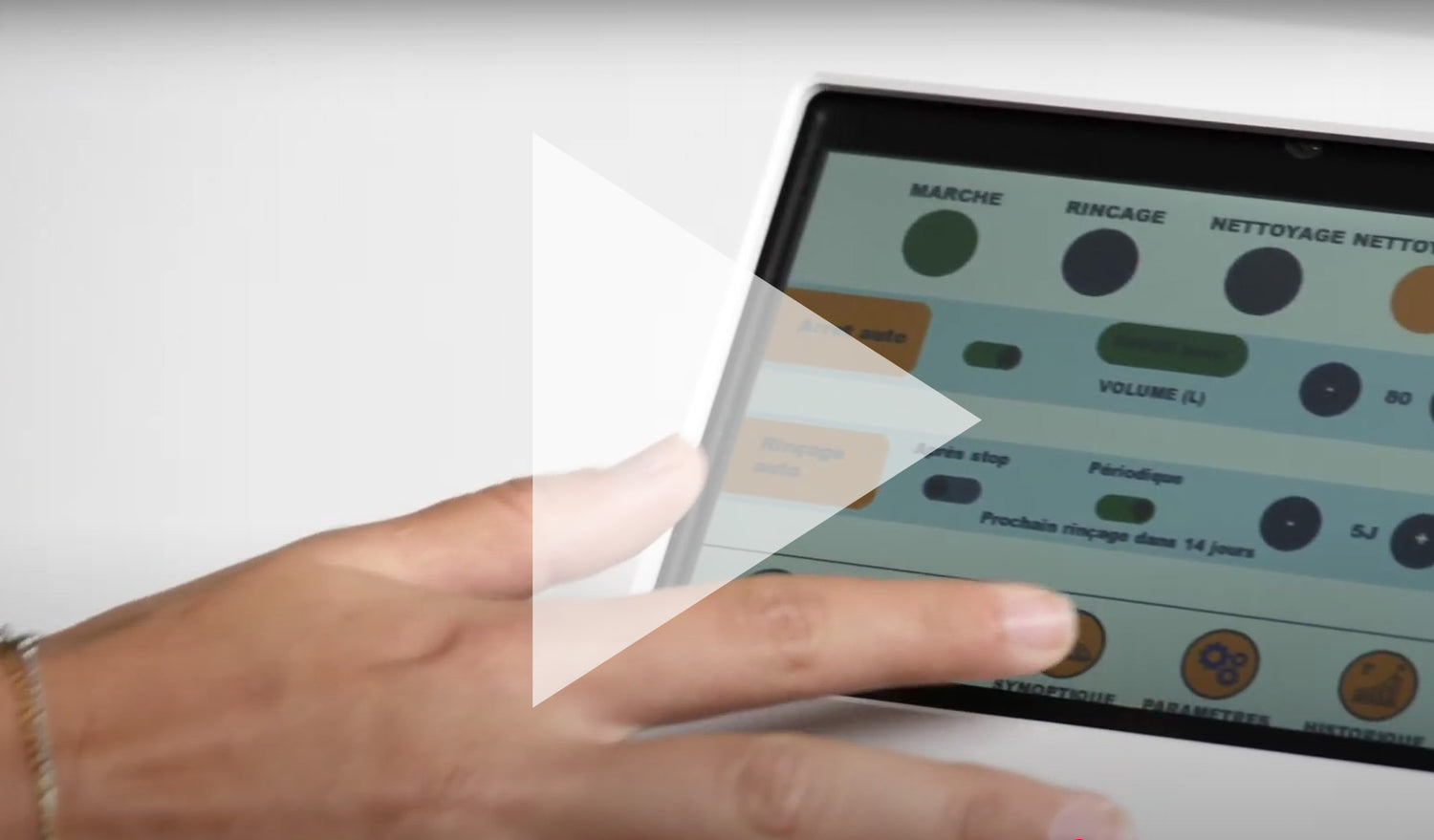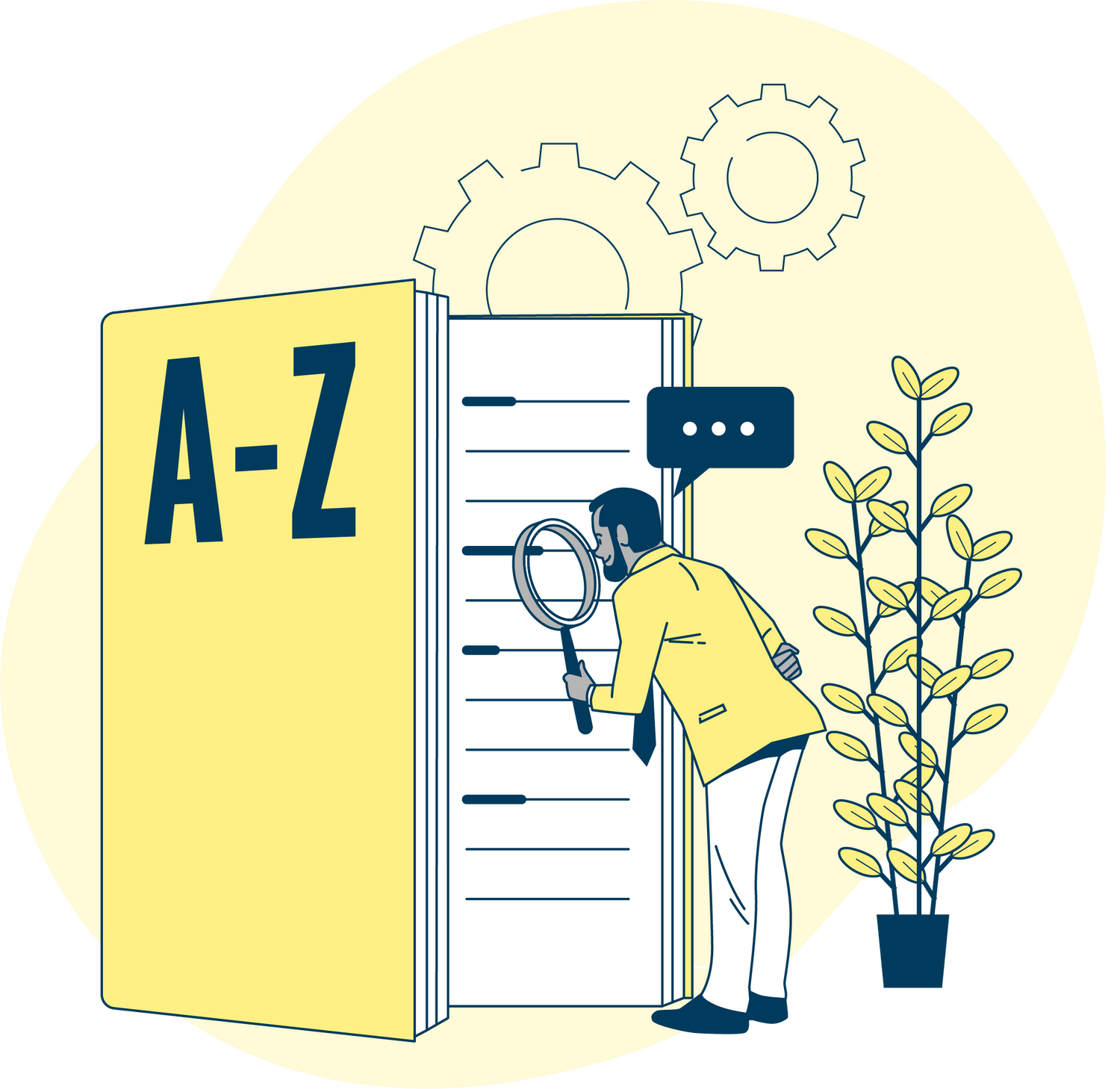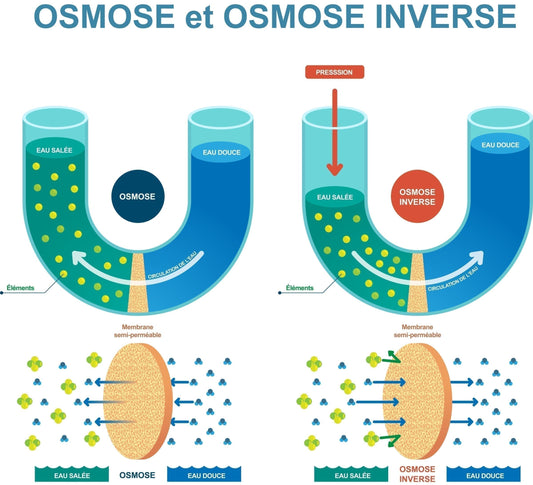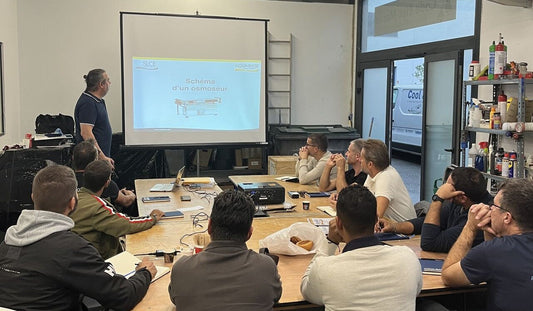
Documentation
-

PROFESSIONAL Catalog FR
Browse the catalog -

Catalogue PLAISANCE FR
Feuilleter le catalogue -

General catalog PLAISANCE
Browse the catalog -

FIJI FR Brochure
Browse the catalog -

FIJI UK Brochure
Browse through the catalog -

FIJI DE Brochure
In the catalog sheets -

PIANA FR Brochure
Browse the catalog -

PIANA UK Brochure
Browse through the catalog -

Brochure PIANA DE
In the catalog sheets

The complete documentation
Log in to your user account to access exclusive, comprehensive documentation: latest version of manuals, manuals for older machines, brochures to download and much more.


Glossary
To better understand the principle of desalination and how our products work.
Frequently Asked Questions
Is the freshwater production indicated on the product sheet identical to that actually observed?
The stated production is measured under optimal conditions: seawater at 25°C and salinity of 35 g/L. Under these conditions, the machines can even exceed the values displayed in the technical brochures. However, in real conditions, production may vary depending on several factors:
- Water temperature : the hotter it is, the higher the flow rate; the colder it is, the lower the flow rate.
- Salinity : Saltier water reduces flow, less salty water increases it.
These variations remain around 10%. Other factors such as filter clogging or pressure also influence performance.
What is the electrical power required for the 35 l/h and 65 l/h models?
For FIJI models with energy recovery , the power consumption is as follows:
- 35 l/h : 12 V – 12 A.
- 65 l/h : 12 V – 25 A, or 24 V – 12.5 A, or 48 V – 8 A.
These values are given for information purposes only and may vary depending on conditions of use.
For conventional PIANA models (30 to 90 l/h) , a generator of at least 4 KVA is required for start-up.
Can you run a watermaker 8 hours a day with solar panels?
Yes, it is possible, but it depends on the model and the energy configuration:
Energy recovery models (FIJI range) : particularly suitable for solar power, thanks to their low consumption and the possibility of direct connection to batteries. They are designed for daily use of 3 to 5 hours .
Conventional models (PIANA range) : less suitable for solar energy due to higher consumption. They require a 4 KVA generator to start and can be used up to 20 hours per day .
Are there any reliability differences between energy recovery and high pressure models?
Yes, both types have different advantages:
Energy recovery models (FIJI) :
- Wear parts are protected.
- Quiet operation.
- Low consumption, no need for a generator.
- Ideal usage range: 3 to 5 hours/day.
- Ideal for sailboats and solar installations.
High pressure models (ARUBA, PIANA) :
- More robust, designed for intensive use.
- Use CAT high pressure pumps known for their durability.
- Noisier, requires a generator.
- Usage range: up to 20 hours/day.
The choice will depend on your lifestyle, your need for energy autonomy and the desired frequency of use.
-

Which watermaker to choose?
The watermaker is essential equipment for sailors and boaters wishing to gain autonomy.
Which watermaker to choose?
The watermaker is essential equipment for sailors and boaters wishing to gain autonomy.
-

How to winterize a watermaker?
Winterizing a watermaker is an essential step to preserve its proper functioning and extend its lifespan.
How to winterize a watermaker?
Winterizing a watermaker is an essential step to preserve its proper functioning and extend its lifespan.
-

How does a watermaker work?
A watermaker, also called a reverse osmosis system, is a device that transforms seawater into fresh water.
How does a watermaker work?
A watermaker, also called a reverse osmosis system, is a device that transforms seawater into fresh water.
-

Training within SLCE AQUA-BASE watermakers
Training within SLCE watermakers plays an important role in the services we offer to our users and partners. With a team of four trainers, we organize around fifteen sessions each...
Training within SLCE AQUA-BASE watermakers
Training within SLCE watermakers plays an important role in the services we offer to our users and partners. With a team of four trainers, we organize around fifteen sessions each...













